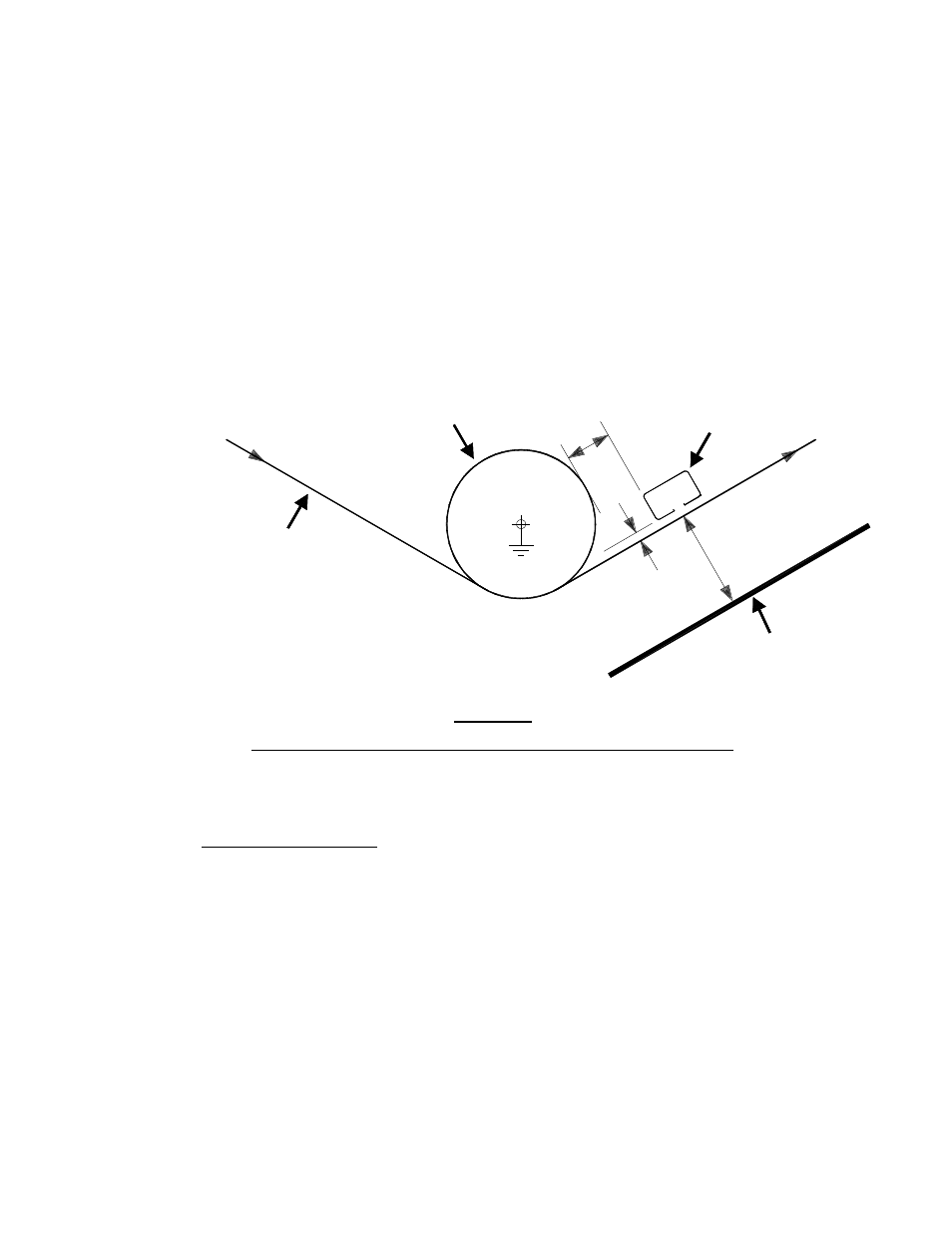Monroe Electronics Electrostatic Fieldmeter - Static Monitor - model 177A User Manual
Page 70

APNE-0016
69
Effect of Operator Presence on Fieldmeter Readings
Fieldmeters are calibrated in fixtures without a person holding them, so the effect of the
grounded operator holding the fieldmeter probe while taking measurements must be
minimized. For best results, handheld fieldmeters, such as the Monroe 265A and 282A,
should be held by the operator’s outstretched arm and away from the body so as to
minimize the effect of the body on the measurement. The fieldmeter should be held in such
a way that the fieldmeter is closer to the web than is the arm or body of the operator.
Taking Handheld Fieldmeter Measurements
Several factors must be considered before and during the measurement process to obtain
accurate readings for analysis. Figure II-7 below and the decision chart that follows provide
the necessary guidance.
Figure II-7
Minimum Distances of Probe to Grounded Rollers and Surfaces
Notes on using the simple “net charge” static survey decision chart:
Decision Chart Page 1:
All insulating materials are ‘transparent’ to electric fields, so it is not possible
to distinguish on which side of an insulating sheet the charges are located
(when measured in free space) [4]. Only the average charge (net charge)
can be measured by a fieldmeter. Fortunately, net charge is usually the
quantity we are looking for on a charged insulator.
“Bound” charges within the volume of the insulator are also included in the
net charge measured by the fieldmeter. Bound charges are most likely to be
generated by:
Different chemical and/or mechanical properties of the starting web top and
bottom surfaces.
Conductive layer(s) placed on or inside the web, as with metal foil coatings.
Corona discharge treatment (CDT) of the web at any time during its life
cycle.
d
4d
m
in.
[6
,7]
Grounded roller
10d min. [8]
Any grounded
metal surface
Probe
Web